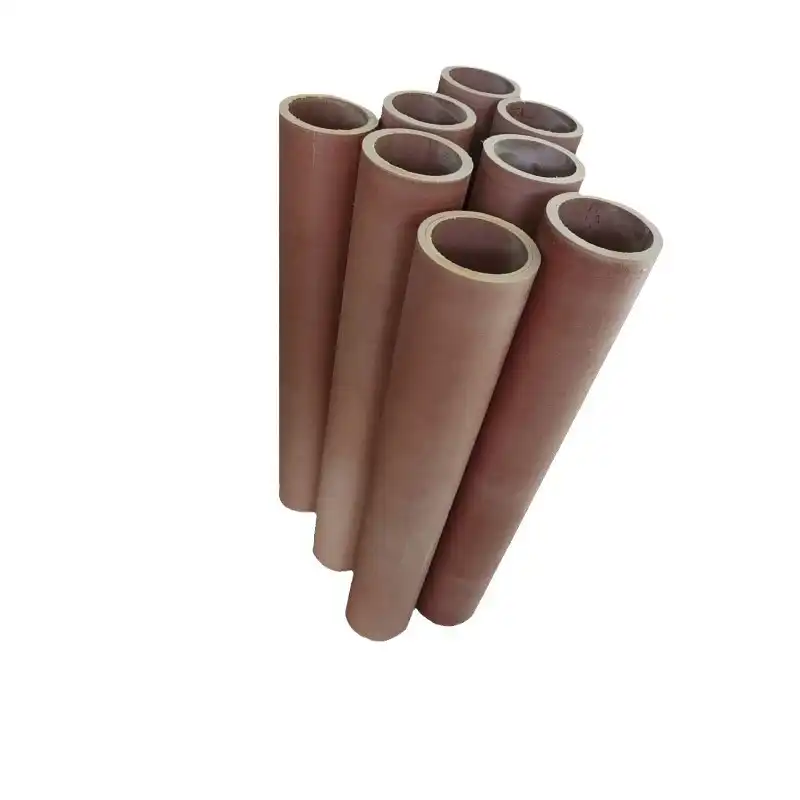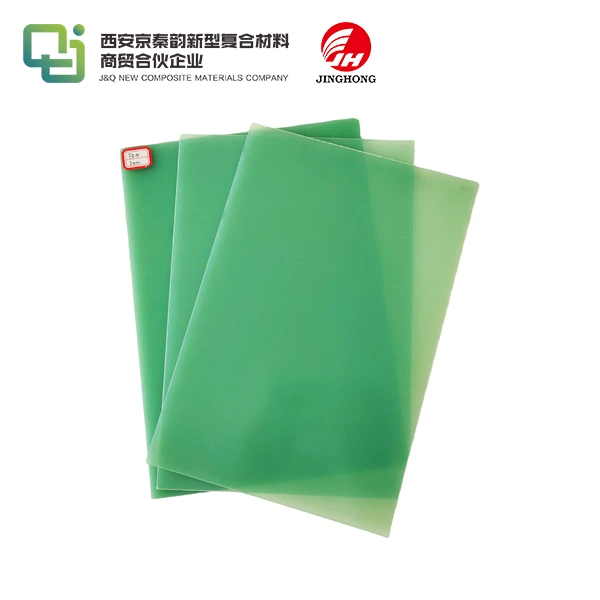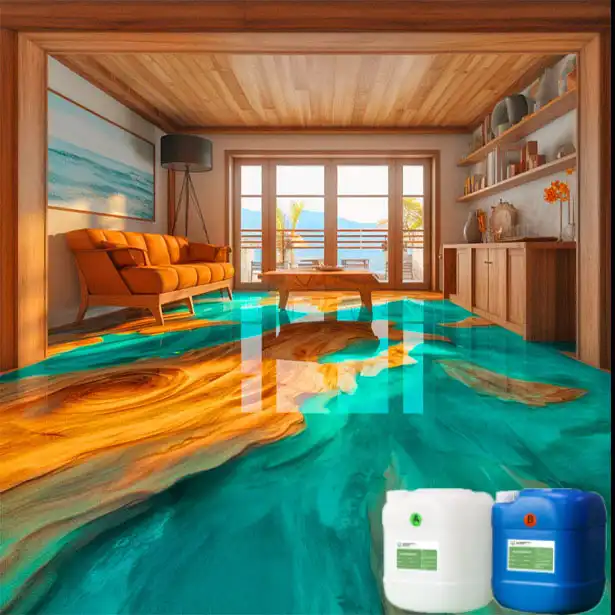How do Phenolic Paper Tubes compare to other materials?
2024-08-16 16:35:39
In the world of industrial materials, phenolic paper tubes have emerged as a versatile and robust solution for various applications. These tubes, also known as phenolic tubes or phenolic paper laminated tubes, offer a unique combination of properties that set them apart from other materials. This blog delves into the characteristics of phenolic paper tubes and compares them to alternative materials, highlighting their advantages and potential applications.
Understanding Phenolic Paper Tubes
Composition and Manufacturing Process
Phenolic paper tubes are composite materials made by impregnating layers of paper with phenolic resin. The manufacturing process involves winding resin-coated paper around a mandrel and subjecting it to heat and pressure. This results in a seamless, cylindrical structure with exceptional strength and durability.
The phenolic resin used in these tubes is a thermosetting polymer, which means it undergoes an irreversible chemical change during the curing process. This transformation gives phenolic paper tubes their characteristic properties, including high mechanical strength, excellent electrical insulation, and resistance to heat and chemicals.
Key Properties of Phenolic Paper Tubes
Phenolic paper tubes boast an impressive array of properties that make them suitable for a wide range of applications: High mechanical strength; Excellent electrical insulation; Low thermal conductivity; Chemical resistance; Dimensional stability; Flame retardancy; Machinability. These properties contribute to the versatility of Phenolic Tubes, allowing them to perform well in diverse environments and under various conditions.
Common Applications of Phenolic Paper Laminated Tubes
The unique combination of properties exhibited by Phenolic Paper Tubes makes them ideal for numerous applications across different industries:
- Electrical insulation in transformers and switchgear
- Structural components in aerospace and automotive industries
- Core material for composite structures
- Chemical-resistant piping and containers
- High-temperature rollers and bearings
- Textile industry components
The versatility of phenolic paper laminated tubes continues to expand their use in emerging technologies and innovative applications.
Comparing Phenolic Paper Tubes to Alternative Materials
Phenolic Tubes vs. Metal Tubes
When compared to metal tubes, phenolic paper tubes offer several advantages:
- Lighter weight: Phenolic tubes have a significantly lower density than most metals, making them ideal for weight-sensitive applications.
- Superior electrical insulation: Unlike conductive metals, phenolic tubes provide excellent electrical insulation, crucial for many electrical and electronic applications.
- Corrosion resistance: Phenolic paper laminated tubes are inherently resistant to corrosion, outperforming many metals in harsh chemical environments.
- Thermal insulation: Phenolic tubes have lower thermal conductivity than metals, making them suitable for applications requiring thermal management.
However, metals may still be preferred in applications requiring very high mechanical strength or extreme temperature resistance.
Phenolic Paper Tubes vs. Plastic Tubes
Compared to plastic tubes, phenolic paper tubes offer several benefits:
- Higher temperature resistance: Phenolic tubes can withstand higher temperatures than most thermoplastics.
- Better dimensional stability: Phenolic paper laminated tubes maintain their shape and size better than many plastics under varying environmental conditions.
- Improved flame retardancy: Phenolic tubes inherently possess flame-retardant properties, unlike many plastics that require additives for fire resistance.
- Enhanced mechanical properties: Phenolic tubes generally offer superior strength and stiffness compared to plastic alternatives.
However, some high-performance plastics may offer advantages in terms of impact resistance or flexibility.
Phenolic Tubes vs. Composite Materials
While phenolic paper tubes are themselves a type of composite material, they can be compared to other composite structures:
- Cost-effectiveness: Phenolic tubes are often more economical to produce than advanced composites like carbon fiber-reinforced polymers.
- Ease of manufacturing: The production process for phenolic paper laminated tubes is relatively straightforward compared to some advanced composites.
- Balanced properties: Phenolic tubes offer a good balance of mechanical, thermal, and electrical properties suitable for many applications.
However, advanced composites may outperform phenolic tubes in specific high-performance applications where extreme strength-to-weight ratios are required.

Advantages and Limitations of Phenolic Paper Tubes
Unique Advantages of Phenolic Tubes
Phenolic paper tubes offer several unique advantages that make them stand out among other materials:
- Versatility: The combination of properties allows phenolic tubes to be used in a wide range of applications across various industries.
- Customizability: The manufacturing process allows for easy customization of tube dimensions, wall thickness, and even property modifications through additives.
- Environmental resistance: Phenolic paper laminated tubes perform well in harsh environments, resisting chemicals, moisture, and temperature fluctuations.
- Long-term stability: These tubes maintain their properties over extended periods, ensuring reliability in long-term applications.
These advantages make phenolic tubes an attractive option for engineers and designers seeking reliable and versatile materials.
Potential Limitations of Phenolic Paper Tubes
While phenolic paper tubes offer numerous benefits, they also have some limitations to consider:
- Brittleness: Compared to some metals and plastics, phenolic tubes can be more brittle and susceptible to impact damage.
- Water absorption: Although resistant to moisture, prolonged exposure to water can lead to some absorption and potential property changes.
- Limited color options: The natural color of phenolic tubes is typically dark brown or black, with limited options for other colors.
- End-of-life disposal: As a thermoset material, phenolic tubes are not easily recyclable, which may be a consideration in environmentally sensitive applications.
Understanding these limitations helps in making informed decisions about the suitability of phenolic paper laminated tubes for specific applications.
Future Trends and Innovations in Phenolic Tube Technology
The field of phenolic paper tubes continues to evolve, with ongoing research and development focused on enhancing their properties and expanding their applications:
- Bio-based resins: Efforts are underway to develop phenolic resins from renewable sources, improving the environmental profile of phenolic tubes.
- Nanocomposite reinforcement: Incorporating nanoparticles into the resin matrix could lead to Phenolic Tubes with enhanced mechanical and thermal properties.
- Advanced manufacturing techniques: Innovations in production processes aim to improve consistency, reduce costs, and enable more complex tube geometries.
- Hybrid materials: Combining phenolic tubes with other materials could lead to composites with synergistic properties for specialized applications.
These advancements promise to further expand the capabilities and applications of phenolic paper laminated tubes in the future.
Conclusion
Phenolic paper tubes offer a unique combination of properties that make them valuable in numerous industrial applications. Their balance of mechanical strength, electrical insulation, thermal resistance, and chemical durability sets them apart from many alternative materials.
If you're interested in learning more about phenolic paper tubes and how they can benefit your specific application, don't hesitate to reach out. With over 20 years of experience in producing and selling insulating sheet materials, and more than a decade of expertise in international trade, we're well-equipped to provide you with the information and support you need. Please contact us at info@jhd-material.com.
References
1. Smith, J.A. (2020). "Advanced Composite Materials in Industrial Applications." Journal of Materials Engineering and Performance, 29(4), 2345-2360.
2. Johnson, R.B., & Lee, S.M. (2019). "Comparative Study of Phenolic Resin-Based Composites." Composites Science and Technology, 175, 58-68.
3. Zhang, X., et al. (2021). "Recent Advances in Phenolic Resin Technology for High-Performance Applications." Progress in Polymer Science, 112, 101324.
4. Brown, T.L. (2018). "Electrical Insulation Materials: Properties, Selection, and Applications." IEEE Electrical Insulation Magazine, 34(3), 8-23.
5. Garcia, M.A., & Rodriguez, F. (2022). "Thermal and Mechanical Properties of Phenolic-Based Composites for Aerospace Applications." Aerospace, 9(2), 78.
6. Wilson, D.C. (2021). "Environmental Considerations in Material Selection for Industrial Components." Journal of Cleaner Production, 290, 125734.







